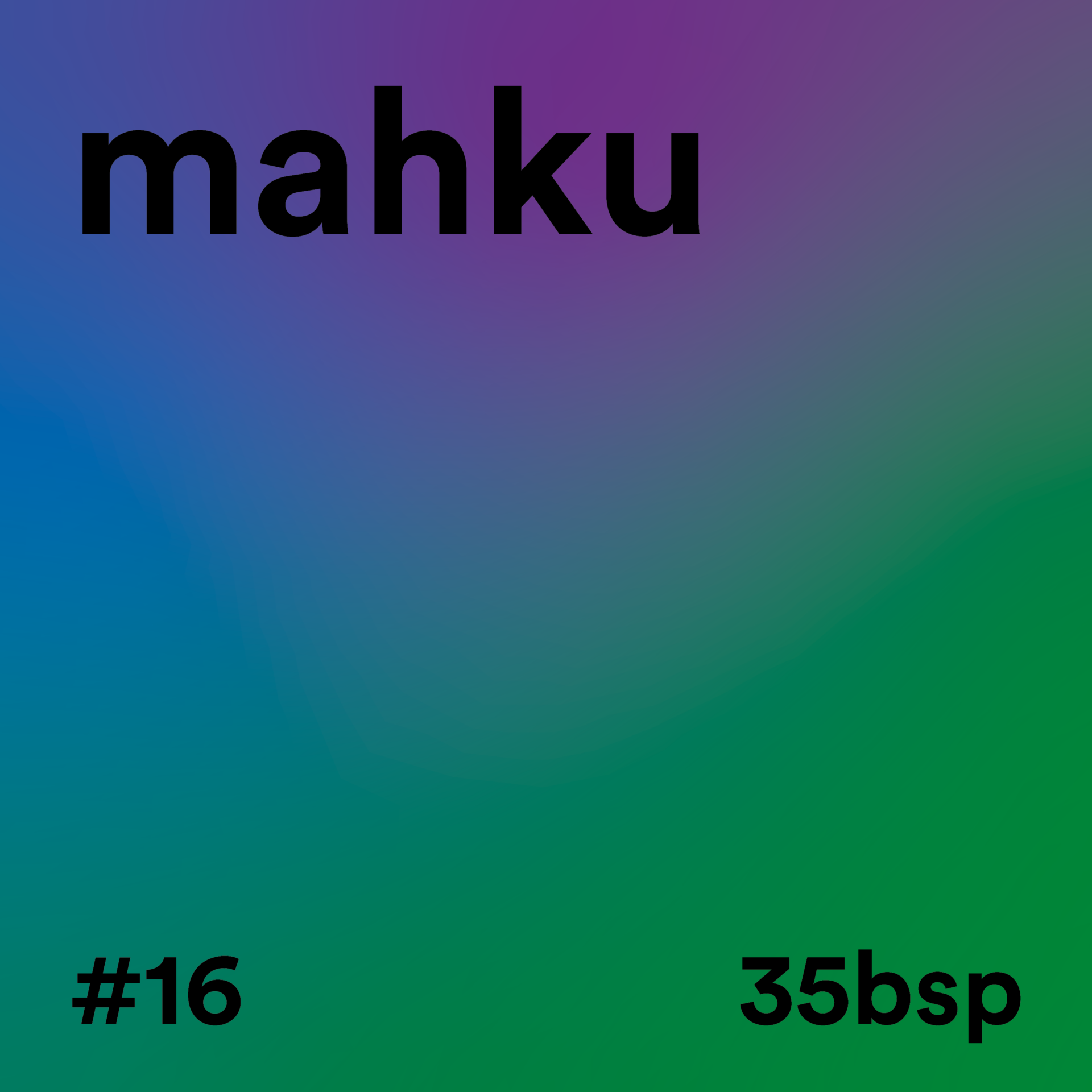
MAHKU
We are looking at the works of the MAHKU group, an acronym for Movimento dos Artistas Huni Kuin, a collective of artists from the Kaxinawá Indigenous Land of the Jordão River. The group is made up of Ibã Huni Kuin, Bane Huni Kuin, Maná Huni Kuin, Acelino Tuin and Kássia Borges.
The collective’s production was inspired by the investigations begun by Isaías Sales, or Ibã Huni Kuin, Txaná of the Huni Meka songs.In 2009, his sons – Bane Acelino and Maná – began transforming these chants into images, with the aim of decorating and understanding them. This process was then shared, culminating in the creation of the artistic collective in 2012. Today, the collective is an important player on the Brazilian contemporary art scene.
For this Bienal, MAHKU is presenting a series of eighteen new paintings. Each one is two meters and twenty centimeters wide by two meters and sixty centimeters high.They are arranged next to each other in a semicircle, covering the end of the ramp on the purple floor and continuing one another.
The Huni Kuin iconography features translations of healing songs and scenes conceived from the process of miração, experiences of visions stimulated by the ingestion of ayahuasca during nixi pae rituals. They also feature translations of mythical narratives and ancestral stories described in the ritual chants.
One of the striking features of Huni Kuin paintings is the presence of humans and non-humans, or humans and other natural beings, entangled in a non-hierarchical way.
This suggests that the relationship between them is not one of separation, but of continuity and co-constitution.Another characteristic is the multiple colors. Huni Kuin paintings usually have small areas of intense color, with yellow, red, blue, black, brown and pink predominating.These areas are integrated with the other elements by means of very complex graphic weaves, which reflect and make reference to the body paintings.
Another striking aspect is the frames filled with graphics demarcated by black lines with colored areas. They are not external, but part of the paintings.But rather than limiting or containing the other elements, the frame seems to propose the demarcation of an autonomous territory, where the Huni Kuin mythical, traditional and mirage stories can be freely enjoyed.
Unlike Western codifications, where mimesis, perspective, the rules of proportion and canonical techniques prevail, MAHKU’s paintings are committed to something different: maintaining a zone of indiscernibility between dream and myth; not hierarchizing the relationships between living beings; presenting imagery that moves away from illustration, abstraction or figuration to guide us along paths of inner experiences – or a “spiritual art”, as Ibã says.
Let’s take a closer look at one of the paintings, done by Kássia Borges, a member of MAHKU. It represents the Huni Kuin healing song of Tabaco Verde. Acting as a purifier for the indigenous peoples, tobacco and other herbs are administered as sacred medicines.Alongside the other 17 panels which also represent healing chants, this multicolored painting features three indigenous women working on ceramic pots, around frogs, snakes and trees. Shades of green predominate.The artist says that, like singing, ceramic work is also a kind of healing, as it balances the four elements in a process of manipulation and energy release.
For this Bienal, the artists created the images according to the temporalities and vicissitudes of their own investigative processes. This method is important for understanding the collective’s works. As Renato Menezes says in the exhibition catalog, “what we find is the result of an image-process, made by many hands, based on dialogue and learning between those involved, whose ultimate goal is healing, both for those who made it and for the observer who accesses it, transforming it into a spiritual experience.”

 Português
Português